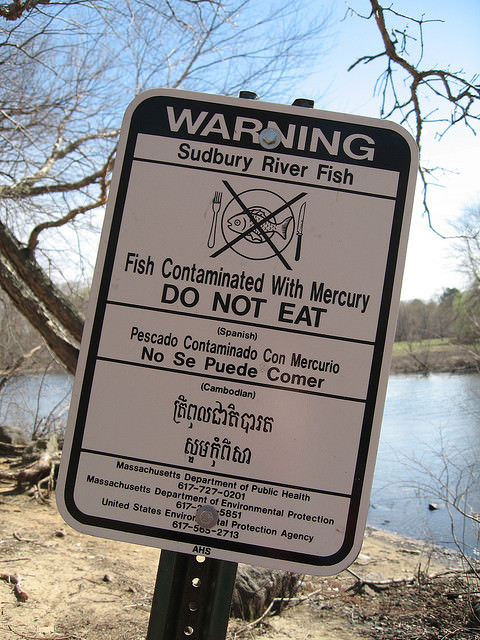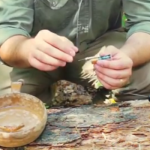Toxins in Fish and How to Minimize Exposure

Much of the pollution that we generate either soaks into our groundwater supply or finds its way to the ocean. Unfortunately, both of these destinations are sources of water, food and nutrients for almost every type of fish or marine life that we eat. While the problem of toxic fish is well-known, there is every reason to believe the government is not being completely honest about how big it really is, and this places all of us at risk.
Heavy Metals

The most commonly discussed toxins in seafood and fish we eat come from heavy metals. This includes everything from mercury to lead, copper and even uranium. These metals get absorbed by the fish as they swim and eat in contaminated waters. Heavy metals are responsible for a host of adverse health effects that include everything from neurological development to the destruction of organs and the formation of cancer cells.
Unfortunately, there is little that we can do to avoid fishing in contaminated waters, since so many rivers, lakes and streams have traces of heavy metals in them. The good news is that we can minimize exposure by taking some very simple and common-sense steps.
Most heavy metals accumulate in the fatty tissues of fish. This means that fatty fish absorb and contain the highest concentrations of these contaminants. Therefore, fish that are less fatty do not pose as great a health risk. This is why the recommendations are that we limit consumption of fatty fish to one or two a week, depending on who you listen to. The other piece of good news is that small doses of heavy metals in our bodies do minimal damage. The problem is that they accumulate over time and pose the greatest health risks. By keeping consumption low and infrequent, you can still enjoy fatty fish while minimizing any real threat. The key lies in moderation.
Pollutants

While pollutants are not mentioned nearly as much as heavy metals, they pose the greatest health risk to humans and fisheries in general. Pollution comes from everywhere. Rain brings pollution to the ground. Water carries everything on the surface to streams, lakes and rivers, and all of these eventually empty into the oceans. This means that almost any substance you can think of ends up in water where seafood dwell. This doesn’t mean that the entire ocean system is impacted, but much of the Gulf of Mexico is considered to be unsafe. This is why we import most of our seafood from Asia, thanks to the BP oil spill as well as pollution discharged by the Mississippi River.
There are tens of thousands of pollutants, most of which nobody really understands in terms of health risks. Everything that lives in impacted waters either eats, drinks, breaths or absorbs these contaminants to one degree or another. We will never know the extent of the problem, and only a few species are tested against a limited range of standards established by the government. This is part conspiracy and part the realities that we don’t have the resources to tackle this problem.
Again, minimizing consumption is key to avoiding illness. Unfortunately, we can’t even establish a link between seafood and illnesses that are common in our society, such as cancer, organ or neurological problems. Since there is no proven link, warnings about eating too much marine life from contaminated waters are non-existent, and they provide people with a false sense of security.
This article is not intended to make you scared to eat seafood, or go fishing and grill up your next catch. Rather, it’s to make you aware of this very real problem that is hard to measure and prevent. Take care to diversify your consumption of species you catch from the water, fish in different bodies of water, and make sure that you are choosing waters that are as pristine as possible. We need the nutrients that are found in fish and seafood, however it’s essential that you are prudent when it comes to deciding what you put in your body now and during a survival situation.













